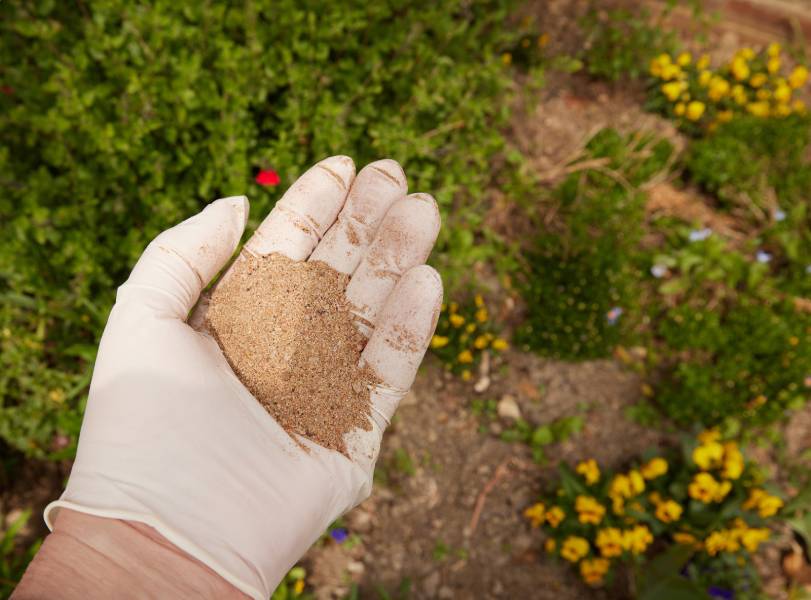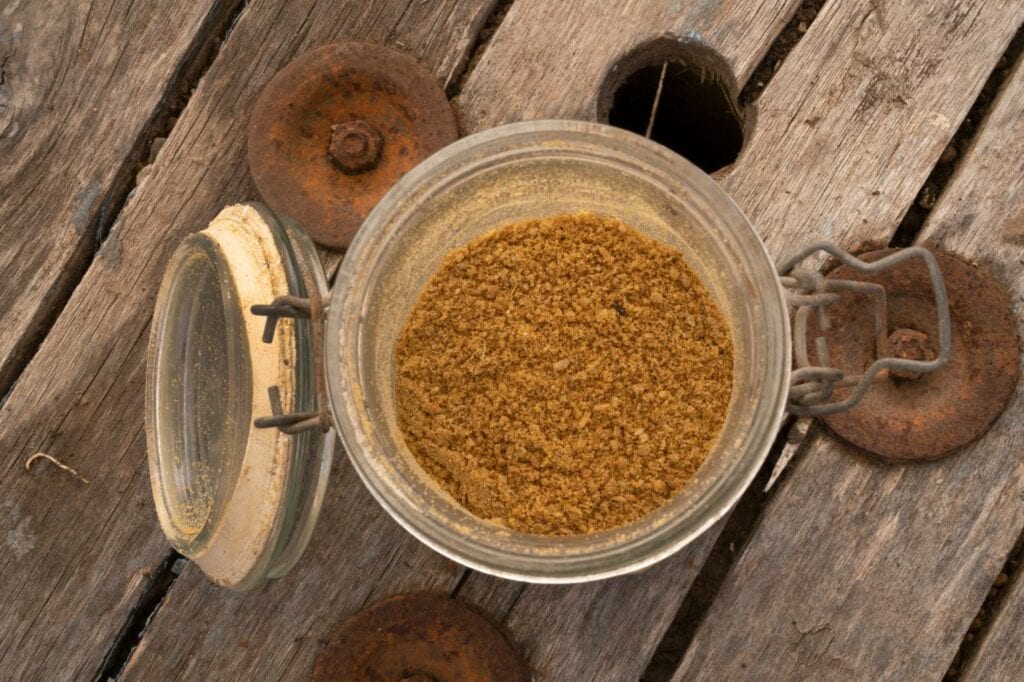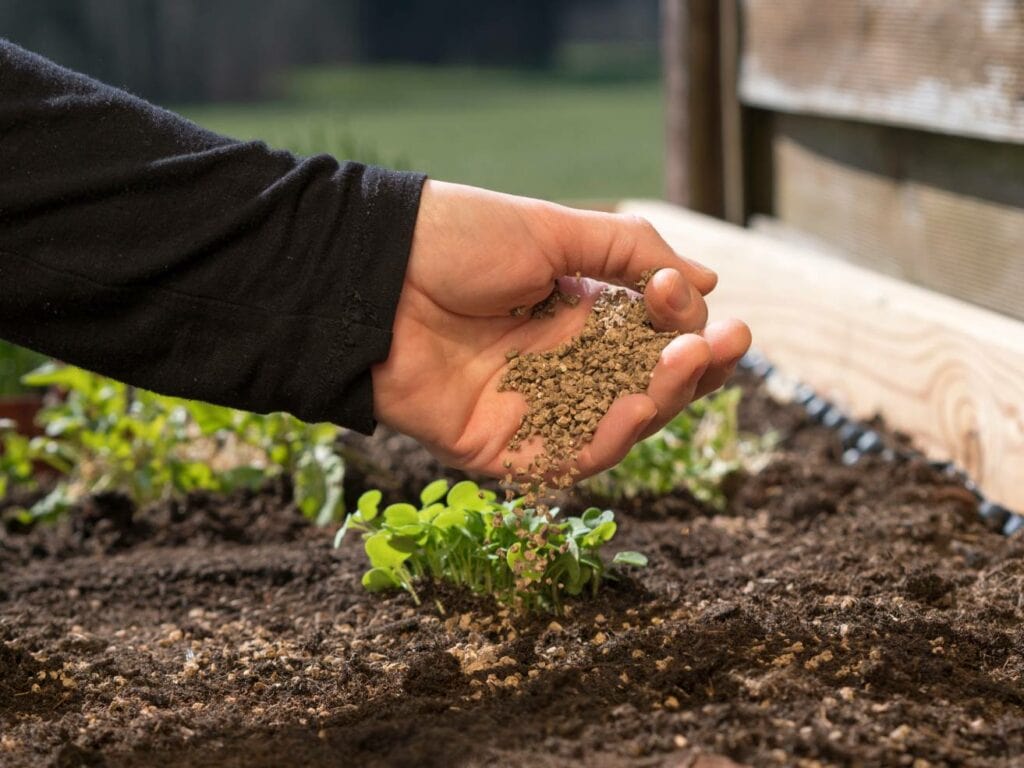Should I Add Bone Meal to My Soil? How Much?
-
Kristin Hitchcock
- Last updated:

There are several benefits to adding bone meal to your soil, which is why it is a traditional gardening method. While it isn’t used as much today, there are several ways you can effectively take advantage of this ancient technique. Learn more about why you should add bone meal to your soil, as well as how much down below.

Why Add Bone Meal to Your Soil?
Firstly, bone meal includes a lot of phosphorous. This is required for many different plants. However, it is deficient in nitrogen and potassium, which may need to be added separately. Different plants have different needs, so it mostly depends on what you’re growing.
Secondly, this fertilizer doesn’t get eaten up all at once. Instead, it is released into the soil over several months. Therefore, it sticks around for much of the growing season, improving the soil structure.
Thirdly, bone meal is also very high in calcium, as you might expect. Plants need calcium to some extent, as it helps with cellular growth and functioning. Therefore, calcium can encourage better root and leaf growth.
Finally, bone meal is entirely natural. Unlike other fertilizers, it isn’t chemically based. While plants don’t always care about the type of fertilizer you use, using more natural options makes it less challenging to mess up. It is tough to overdo natural fertilizers, while many chemicals can easily cause burns.

Can You Sprinkle Bone Meal on Top of Soil?
There are a lot of ways you can effectively use bone meal. One of these ways is to sprinkle it evenly across the top of the soil. Then, water the soil well to help the bone meal set in, or simply sprinkle it shortly before it rains. Otherwise, the bone meal may blow away.
Of course, getting the bone meal exactly even can be challenging, if not impossible, in many cases. Therefore, we highly recommend mixing it into your planting compost or directly into the soil before planting. Typically, this works best, as it gives the bone meal more time to work and ensures it is more even.
However, you can just sprinkle bone meal on the top of the soil if it is an afterthought or if you believe you need more than you initially added.
When Should I Give My Plants Bone Meal?
You can use bone meal to handle specific problems for your plants or as a regular fertilizer. Some specific occasions where using bone meal is preferable and may help specific problems.
For instance, bone meal fertilizer can increase phosphorous in a garden. Therefore, it is helpful for flowering plants, as phosphorous is necessary for blooming. If you use bone meal on flowering plants, you may notice more giant and more plentiful flowers.
Before adding bonemeal, it is recommended to have your soil tested. If the pH exceeds 7, plants will have difficulty absorbing phosphorous from the soil. Therefore, you should only use bone meal soil if the pH is below 7. Otherwise, the bone meal won’t work (and your plants may have difficulty growing due to the unusual pH, anyway).
Once added, bone meal works in the soil for around 4 months. It is recommended that you add 10 pounds of bone meal fertilizer for every 100 square feet of the garden. In other words, that’s one pound every 10 square feet. You want it to be as even as possible so that your plants get it evenly.
Furthermore, you can also use bone meal to balance out high nitrogen contents, which usually occurs when using organic soil additives. For instance, manure is an excellent nitrogen source, but it doesn’t contain phosphorous. Therefore, adding bone meal would help create a more balanced fertilizer.
Which Plants Benefit from Bone Meal?
Typically, the best plants to add bone meal to are flowering plants. Bone meal is high in phosphorous, which is required for flowers. Therefore, these plants require extra phosphorous to produce outstanding, big flowers. Furthermore, some crop plants also benefit from bone meal. Carrots, onions, and radishes may produce more roots if provided with adequate phosphorous.
However, it isn’t so simple as adding this bone meal to the soil and expecting the plants to soak it all up. The pH of the soil must be below 7 for the plants to utilize the bone meal properly. Otherwise, they won’t be able to soak up anything.

Can Bone Meal Be Used on All Plants?
Bone Meal is a natural fertilizer that can technically be used on all plants. However, that doesn’t mean that it will be beneficial for all plants nor suitable for your soil. Bone meal contains high levels of calcium and phosphorus, which is why it is used in gardening.
Before deciding to use bone meal, you should test your soil. Bone meal only works if your soil is below 7 pH. Therefore, you’ll need to shift your soil’s pH or utilize a different fertilizer if your soil falls above this range.
Fertilizer works best for flowering plants as it contains phosphorous to help their flowers bloom. It also doesn’t need to be reused very often, as one dose of bone meal continues to release nutrients for about four months.
However, the smell of bone can attract wild animals, and if there are many roaming dogs in your area, you may want to use a different fertilizing method. You don’t want your dog digging up your garden because it smells good.
Therefore, there are some situations where bone meal isn’t a good idea. Plants that need a pH above 7 cannot access the nutrients in bone meal and stay in the correct pH soil, for instance.
Can Bone Meal Burn Plants?
Bone meal cannot burn plants. Because bone meal is a gradual-release fertilizer, you can’t really add too much. In the case that you do add too much, the levels will still slowly increase in the soil—not become available all at once. Therefore, this is a good option for those that have more sensitive plants or are a bit suspicious when it comes to fertilizers.
Unlike chemical fertilizers, bone meal is often considered safer for most plants. Therefore, we highly recommend it for new gardeners.

Conclusion
Bone meal is a natural, organic fertilizer that contains high levels of calcium and phosphorous. Therefore, it works well for plants that require high levels of these nutrients, like flowering plants. Plus, it is a gradual-release fertilizer that works for about four months. For this reason, you don’t have to add it to the soil continuously or worry about burning your plants.
Overall, bone meal is straightforward to use and works best alongside nitrogen-rich fertilizers, like manure. However, it isn’t a complete fertilizer, as it doesn’t contain everything a plant needs to thrive.
Therefore, you can’t only use bone meal in your soil, though it can be a good additive when paired with other fertilizers.
Featured Image Credit: Joe Kuis, Shutterstock
Contents